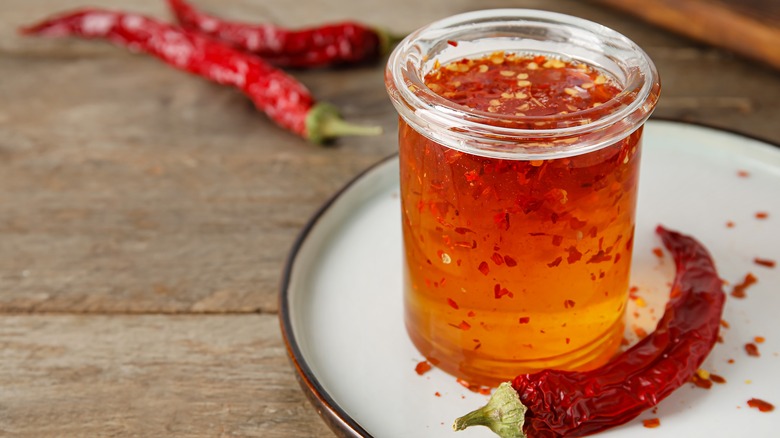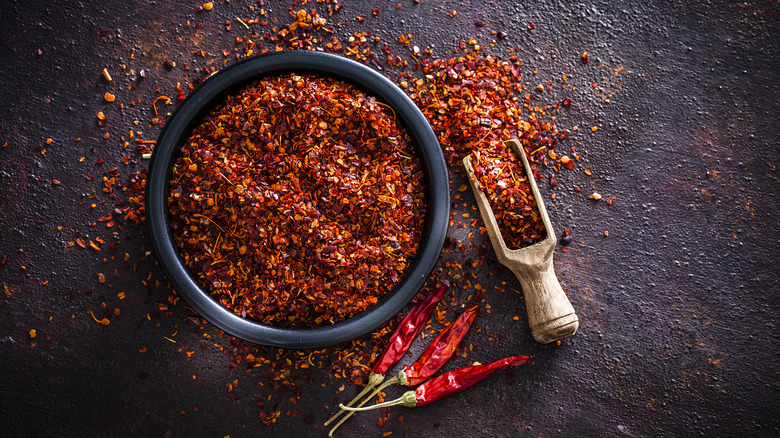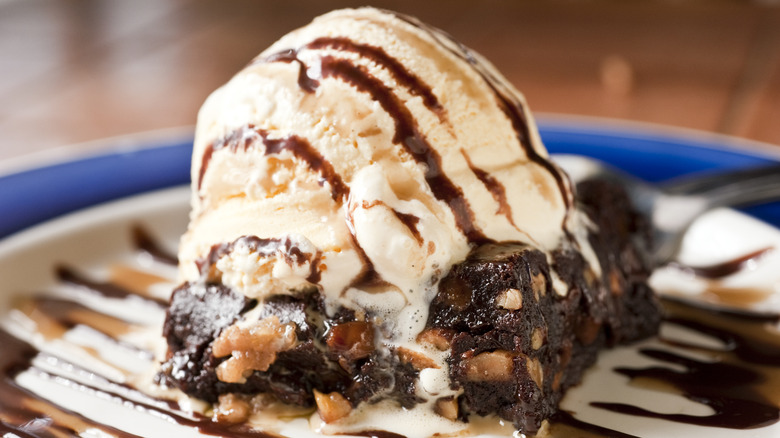How Sweet And Spicy's Rebrand Took Over The Culinary Scene
Though sweet and spicy have tangoed together for a long time, the flavor pairing officially got a new name, courtesy of the internet. Social media users coined the combination "swicy" after demand for hot honey and other pleasantly piquant condiments soared among young snackers. And as diners sweat and tingle their way through breakfast, lunch, and dinner, it's unlikely interest will ebb anytime soon.
From jalapeño margaritas to the Vietnamese dipping sauce nuoc cham, it's easy to point out tasty examples of swicy that existed around the world before the age of TikTok. However, culinary experts usually point to hot honey as the starting point for the recent frenzy. The topping, which burst onto New York's pizza scene in 2010, gained a steady following as savvy eaters used it to cut through rich pepperoni and crunchy fried chicken.
Even major names have taken note of the preference, with companies like Pizza Hut and brands like Doritos adjusting their products to embrace the moment. But the most creativity is happening in home kitchens, where cooks are sharing their family's recipes and experimenting with unexpected combinations. Whether you start by heating up tteokbokki, a Korean dish of simmered rice cakes with gochujang, or dusting your next fruit salad with Tajín, there are plenty of opportunities to add the flavor profile into your routine.
Sweet balances spicy
There's a reason generations of eaters have gravitated toward swicy condiments. In addition to tasting delicious, sugar and spice actually balance each other out. Adding sweetness can smooth the rough edges of a hot, salty, or acidic dish. Plus, spicy food causes your body to release endorphins, which means you'll leave the meal feeling great.
In fact, sugar is an underappreciated component of the Scoville Scale, which measures a pepper's heat. To come up with the ratings on the scale, testers extract capsaicin, the tingly hot chemical in the fruit, and assign it a number based on how much sugar water is required to dilute and negate the chemical's effects. The more sugar water needed, the higher the Scoville units. So, if you find yourself in over your head after tasting a hot pepper, you can suck on a cube of sugar to help put out the fire.
But chilis add more than just sweat to your brow. They're also technically fruits and bring their own notes of floral, berry, and even smoky rich scents to the mix. Because of this, chefs opt for different peppers depending on the other ingredients in the meal. To amplify chocolate in brownies and mole, heavier roasted anchos and chipotles might do the trick, whereas a bright habanero can brighten fruit-filled cheesecakes and custards.
Branch out with swicy flavors
By now, you've likely had the pleasure of tasting hot honey on pizza, but that's just the tip of the iceberg. Both pickling experts and novices should consider hopping on the trend, as peppers can be used for more than just hot sauce. Try making cowboy candy out of extra jalapeños to mix up your condiment routine or use as a garnish for lemonades and margaritas. Or reduce waste by turning watermelon rinds into swicy pickles using red pepper flakes — and maybe even pink-hued chamoy.
Cocktails and coffees can both skew saccharine, which makes them ideal candidates for a piquant partner and an easy entry point for newcomers. In addition to elevating tequila-based drinks, a spicy kick can perk up the honey or maple syrup in a hot toddy or a bee's knees. Another approach is to add a sweet heat to brunch via infused mochas and turmeric lattes.
For a bolder after-dinner approach, top vanilla ice cream with hot sauce. You can even jump the shark by pairing the dairy with chili-infused brownies to create a swicy sundae. Think carefully about the fruity and smoky flavors in your condiments to ensure the additions complement each other.



